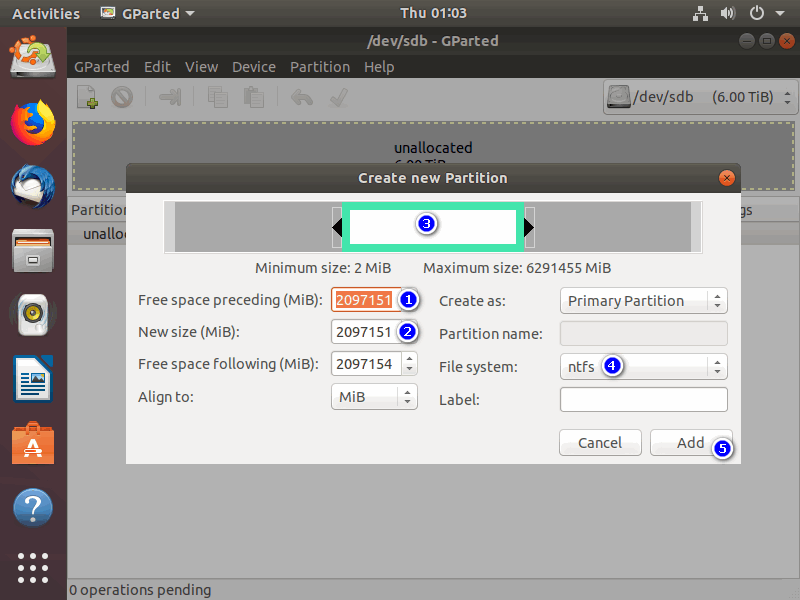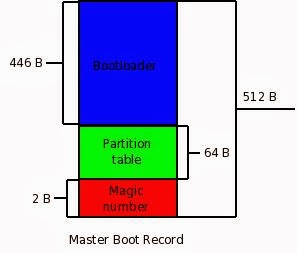

- #Linux initialize drive as mbr linux install
- #Linux initialize drive as mbr linux manual
- #Linux initialize drive as mbr linux full
- #Linux initialize drive as mbr linux iso
- #Linux initialize drive as mbr linux plus
#Linux initialize drive as mbr linux plus
This means that you can create three primary partitions, plus an extended partition. However, you can circumvent this limitation by using logical partitions. MBR only lets you create four primary partitions. Although you might only have one physical drive, you can use partitions to split it up and assign a different drive letter to each partition. You always need at least one partition on a drive, or else you can't save anything. Simply put, partitions are sections on the drive that store data. While GPT is more modern and has greater advantages, there are some unique situations where you need MBR. We're going to look at the differences between MBR and GPT, which is best for Windows 10, along with assessing which is the best for your SSD. These are methods that hold information about how the data is stored on the drive.
#Linux initialize drive as mbr linux iso
This is especially useful if you’ve used dd to raw write an ISO image to your USB, and now the device appears smaller than its original capacity and is no longer usable for traditional storage purposes.When you connect a drive to Windows, you need to choose between Master Boot Record (MBR) or GUID Partition Table (GPT). Note: You can also Recover Lost USB Storage Space.
 Then try to format your USB Flash Drive using any method you want. Replacing X with your actual USB device, type the following and then press enter dd if=/dev/zero of=/dev/sd X count=1 bs=4096 status=progress Replacing 1 with your disk number which can be found by running diskmgmt.msc dd if=/dev/zero of=\\?\Device\Harddisk 1\Partition0 count=1 bs=4096 -progressįor Linux users. If that fails, try the following, instead. Replacing X with your actual USB drive letter, type the following and then press enter ĭd if=/dev/zero od= X: count=1 bs=4096 -progress Next, we will wipe out the partition table and leading filesystem information.įor Windows users using dd.exe. Open up a terminal (or command prompt in Windows). Windows users need to download dd.exe to follow along. Here is a last resort you can try before tossing your drive or sd card into the trash. Or if you need to recover from a corrupted USB flash drive or SD card. Note: USB not detected? If none of the options mentioned above worked to help you restore a USB. Recover a Corrupted USB Flash Drive or SD Card with dd
Then try to format your USB Flash Drive using any method you want. Replacing X with your actual USB device, type the following and then press enter dd if=/dev/zero of=/dev/sd X count=1 bs=4096 status=progress Replacing 1 with your disk number which can be found by running diskmgmt.msc dd if=/dev/zero of=\\?\Device\Harddisk 1\Partition0 count=1 bs=4096 -progressįor Linux users. If that fails, try the following, instead. Replacing X with your actual USB drive letter, type the following and then press enter ĭd if=/dev/zero od= X: count=1 bs=4096 -progress Next, we will wipe out the partition table and leading filesystem information.įor Windows users using dd.exe. Open up a terminal (or command prompt in Windows). Windows users need to download dd.exe to follow along. Here is a last resort you can try before tossing your drive or sd card into the trash. Or if you need to recover from a corrupted USB flash drive or SD card. Note: USB not detected? If none of the options mentioned above worked to help you restore a USB. Recover a Corrupted USB Flash Drive or SD Card with dd #Linux initialize drive as mbr linux full
Several methods to help you restore a USB flash drive back to original state with full capacity.
(1.) Under Disk Mode, Choose USB-FDD, USB-HDD, or USB-ZIP mode I use USB-HDD as it works with every BIOS I use. (1.) Select your USB Flash Drive from the list, (2.) Click Parts Manage. Step 2: Make a new partition for Linux Mint. #Linux initialize drive as mbr linux install
Download, extract, then run Pauly’s BOOTICE Tool. Follow the steps below to install Linux Mint in dual boot with Windows: Step 1: Create a live USB or disk. NOTE: It looks like BOOTICE may no longer be in development as the last revision was in 2016. 
One of the most confusing and intimidating parts of installing Linux for dual-booting with Windows is the disk partitioning required. The tool uses a simple and intuitive GUI. How to: Disk partitioning for Linux and Windows dual-booting. Windows users can also use BOOTICE to format and restore a flash drive. Using BOOTICE to repair a corrupted USB drive That’s all there is to it, you should now have a restored USB key with a single exFAT or fat 32 formatted partition that can be read from any computer.
For exFAT, (if using Ubuntu or Debian), type apt install exfat-utils and then type mkfs.exfat /dev/sd x1 (replacing xwith your drive letter). For Fat32, type mkfs.vfat -F 32 /dev/sd x1 (replacing xwith your drive letter). The last step is to create the fat32 or exFAT filesystem. Type umount /dev/sd x1 (replacing x with your drive letter).Ĭ. Type w to write the new partition information to the USB key. Press enter again to accept the default last sector. Next press enter to accept the default first sector. Type 1 to make this the first partition then press enter. Then type p to make this partition primary then press enter. Next we need to create the new partition. (fdisk should automatically select the second partition).ī. Then type d to proceed to delete another partition, if necessary. Type 1 to select the 1st partition then press enter. Next type d to proceed to delete a partition. Then type fdisk /dev/sd x (replacing x with your drive letter). Type fdisk -l and note your USB drive letter. Open a terminal ctrl+alt+t and type sudo su. First we need to delete the old partitions that remain on the USB key. #Linux initialize drive as mbr linux manual
The following manual tasks to restore a USB drive can be performed from a Linux terminal window.Ī. Restoring a USB key to its original state using Linux







 0 kommentar(er)
0 kommentar(er)
